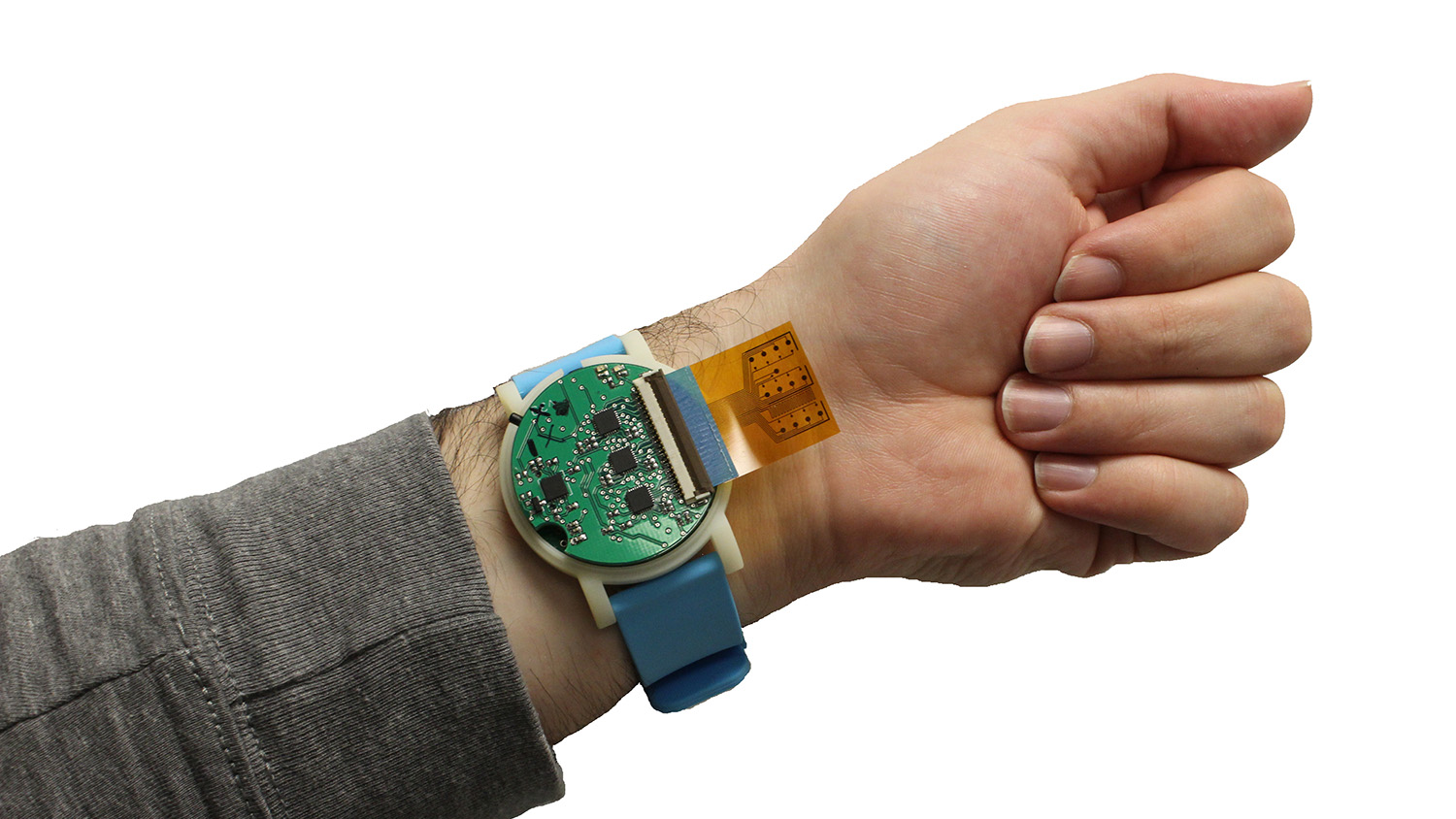ERC Develops Device that Monitors Body Chemistry to Improve Treatment and Performance
Outcome/Accomplishment
The NSF-funded Engineering Research Center (ERC) for Advanced Self-Powered Systems of Integrated Sensors and Technologies (ASSIST) at North Carolina State University developed a monitoring device the size of a wristwatch that monitors an individual's body chemistry through sweat, allowing tailored improvements in medical treatment or athletic performance.
Impact/Benefits
The use of multiple sensors in a wearable device generates more actionable and interconnected information. This allows health professionals to improve treatment, ranging from diabetes management to cardiovascular monitoring, or athletes to track athletic performance and tailor training efforts.
Explanation/Background
In order to measure an individual's metabolites through sweat – markers that assess metabolism, such as lactate, glucose, pH, and temperature – ASSIST engineers developed a replaceable strip embedded with multiple sensors that can be placed on the back of a wireless monitoring device. When the strip rests against the skin, data from the sensors in the strip are interpreted by hardware inside the device, which then records the results and relays them to a user's smartphone or smartwatch.
Combining the sensors with low-power monitoring systems promises the ability to provide continuous monitoring over an extended period of time. Changes in metabolic levels give health professionals valuable information about a patient's medical condition, or help a trainer tailor efforts to improve physical performance for athletes.
Location
Raleigh, North Carolinawebsite
Start Year
Biotechnology and Healthcare
Biotechnology and Healthcare
Lead Institution
Core Partners
Fact Sheet
Outcome/Accomplishment
The NSF-funded Engineering Research Center (ERC) for Advanced Self-Powered Systems of Integrated Sensors and Technologies (ASSIST) at North Carolina State University developed a monitoring device the size of a wristwatch that monitors an individual's body chemistry through sweat, allowing tailored improvements in medical treatment or athletic performance.
Location
Raleigh, North Carolinawebsite
Start Year
Biotechnology and Healthcare
Biotechnology and Healthcare
Lead Institution
Core Partners
Fact Sheet
Impact/benefits
The use of multiple sensors in a wearable device generates more actionable and interconnected information. This allows health professionals to improve treatment, ranging from diabetes management to cardiovascular monitoring, or athletes to track athletic performance and tailor training efforts.
Explanation/Background
In order to measure an individual's metabolites through sweat – markers that assess metabolism, such as lactate, glucose, pH, and temperature – ASSIST engineers developed a replaceable strip embedded with multiple sensors that can be placed on the back of a wireless monitoring device. When the strip rests against the skin, data from the sensors in the strip are interpreted by hardware inside the device, which then records the results and relays them to a user's smartphone or smartwatch.
Combining the sensors with low-power monitoring systems promises the ability to provide continuous monitoring over an extended period of time. Changes in metabolic levels give health professionals valuable information about a patient's medical condition, or help a trainer tailor efforts to improve physical performance for athletes.

